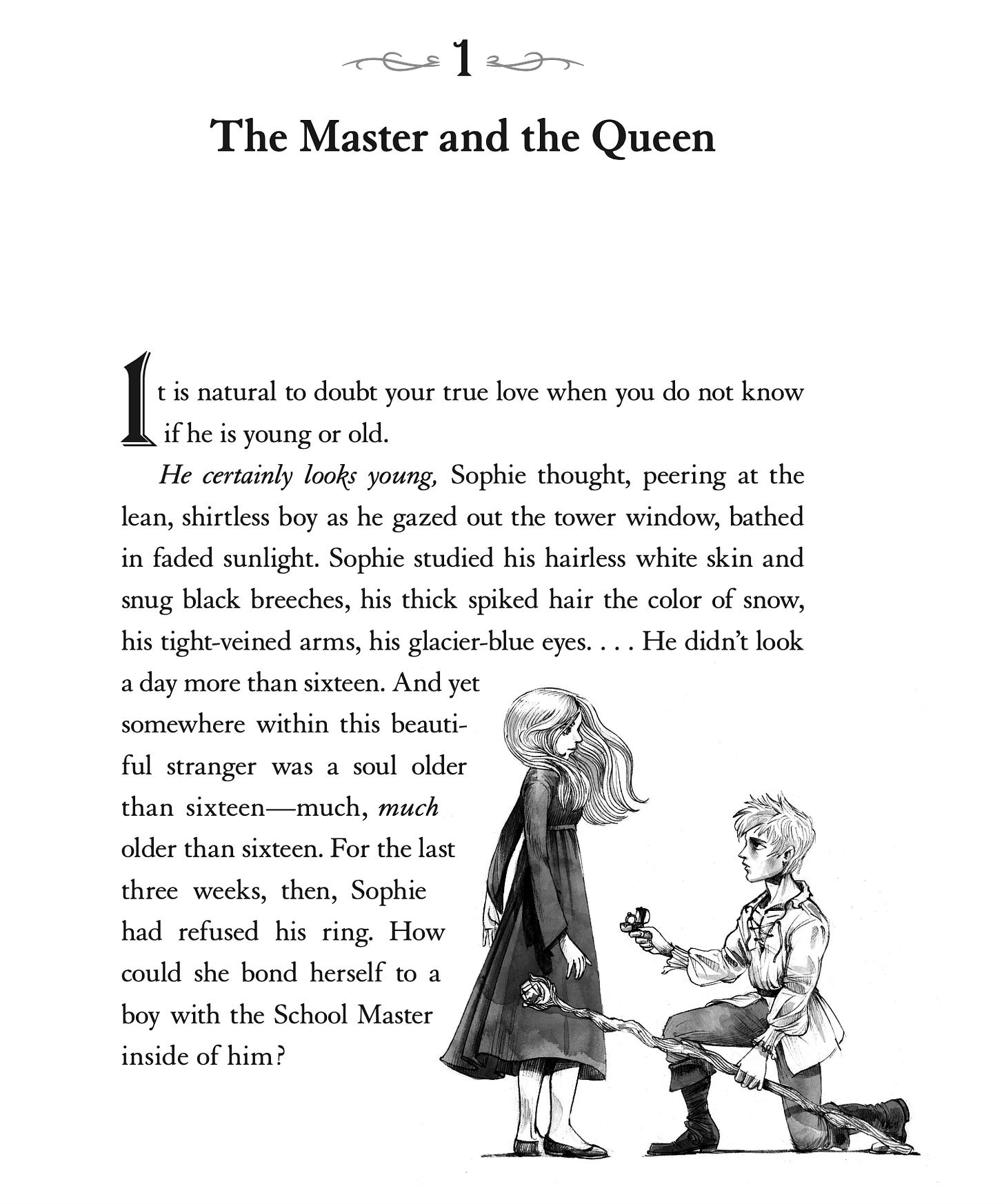“I love what a multi-layered mess this has all turned into.”
It was Jun’s comment in the side margin at the end of Chapter 14 of the New Novel that sparked my attention. (For those of you recent to the diary, Jun is my former assistant turned creative exec and keeper of the castle, who’s been giving me feedback along the way and is the only person other than my editor who’s in on my creative process.)
Jun’s comment stuck with me, because it’s exactly what I want all my books to become — a multi-layered mess, where the proceedings feel at once completely out of control, and yet exhilarating, because all the payoffs have been carefully planted along the way. In the case of Chapter 14, we have murder, sex, politics, kidnappers, and a rogue animal converging on our zone of interest, everything everywhere all at once. Like life, it all feels like chaos, and yet we can trace that chaos back to decisions made earlier, both by characters and author — dynamite sticks unwittingly laid down, one by one, until they all detonate in fast, glorious succession.
This is the aspiration, at least.
It’s tricky to pull-off, because when it comes to Plant & Pay-Off, there’s two different structures.
1. The Network Structure — i.e. NBC, ABC, CBS dramas, where the show opens with the Pay-Off, some frantic action scene: a stretcher with a dying patient being wheeled on a gurney, a building blown up, a sordid murder, and then you either flashback or you catch up to everything that happens with subsequent exposition. I call it the Network Structure, because on ad-supported networks, they’re worried you’re going to change channels and thus keep detonating big revelations before every commercial break to make sure you come back.
2. The Premium Structure — i.e. HBO, where they know they have you because you paid for a subscription and there’s no commercials, so they take time Planting before they Pay-Off. Think of White Lotus or Succession or Game of Thrones, where there’s a lot of moving characters like chess pieces early in a season, developing their motives and desires and weaknesses, until they’re all exactly where they need to be… Then the bomb goes off and everything accelerates, a furious detonation but on a longer fuse.
I’ve always been an HBO kinda guy. All my books have what I call… more alluring starts. (Some would call those starts sloooow.) At first, I thought it was just a deficit of talent and imagination, because I’d heard the note from editors multiple times, and yet with each book, I found myself again starting with a first chapter that was more intriguing than explosive.
I’m thinking of the opening of The School for Good and Evil, which despite promising a kidnapping, is instead focused on Sophie’s dream of handsome princes and her morning beauty rituals. I’m also thinking of that first chapter of The Last Ever After, which could have started with witch burnings, killers in Gavaldon, and all kinds of kinetic drama, but instead begins with this intense, intimate conversation between Sophie and Rafal in the School Master’s tower. I wanted to open with a strange, darkly romantic scene — at once sensual and perverse, that left you completely off-kilter as to what was to come. It’s just talking, no action, but to me, it set the tone for nearly 700 pages of melodrama around the theme of Old/Young that followed.
Same goes with the New Novel.
If I was following Network Structure, I’d start right in the middle of the BIG THING — and indeed, I tried, with my early drafts of the book immersing the main character neck-deep in the madness, and yes, it was exciting and fun in that boppy pop soap opera kind of way… But I never really believed any of it. It would be a bit like starting The School for Good & Evil with Agatha and Sophie at school already — instead of taking the time first to build up their lives in Gavaldon. And here, in New Novel, we didn’t know the character yet. We hadn’t gotten a sense of his voice, his ordinariness, his normal place in the world before the tether cuts and he’s plunged into the abyss.
This also got me thinking of the two types of fantasies: portal fantasies and immersive ones. In portal fantasies, like Alice in Wonderland, Harry Potter, Narnia, you start in the real world and find that path into a new one.
In immersive fantasies, like Lord of the Rings or Eragon, we begin in the unfamiliar realm and vicariously absorb the perspective of a protagonist who lives in it.
Since I was a kid, I almost exclusively read portal fantasies. Somehow, I’m allergic to just being dropped in a strange, new world, either as reader or writer, and for that I have only myself to blame, because it is silly to close off an entire genre of storytelling. (For now, at least. Watch, my next book will be an immersive fantasy and then we can all celebrate my growth!)
Point being: New Novel is a fantasy in its own way, which meant I needed the portal of normal life before we go rip-riding into life turned upside-down. When I tried taking away this portal, it just didn’t vibe or feel like me. Starting the book in the middle of the unfamiliar — in media res, as they teach you in English class — only made me feel disoriented and like I was cheating the reader of the actual story, the one I’m best suited to tell.
And that story starts at the beginning — the true beginning of the tale, which lets me plant my seeds the old-fashioned way, building the tension, bit by bit, until hopefully you can’t take it anymore. Then… boom! The pyrotechnics begin and won’t relent until the end.
Part of why I write this way is because the set-up is hard work, but when the detonations and payoffs begin, it’s fizzy, adrenalized fun. You’re in the thick of it, jacked up on the speed of dramatic escalation, like a rollercoaster cruising through drops and spins in the middle of a raging thunderstorm while you sit next to the hot boy or girl who might have cheated on you but you’re still 100% in love with. It’s a mess, but a multi-layered mess, and a giddy, sumptuous one if I do my job right, because not only are you invested in the drama, you are also invested in who the drama is happening to.
There are risks to this approach, of course.
In this attention-starved era, there is a relentless demand for action at the start to capture reluctant readers and keep them engaged. Go too slow and you risk losing them. (Go too fast, I think, and you risk losing them too — because they just don’t care enough about the characters to fully buy in.)
I have two strategies to make sure I find the balance here. One is related to Pace, which I talk about extensively in Diary 18, where I streamline the book down to its absolute highlights and essentials, so even if it’s just a conversation or a scene without any big spikes of action, it aims to read so fast and smooth that you’ll breeze right through it, absorbing the innate tension, which builds and builds.
The second is focus-testing. This will come a bit later in the process, where I actually give the manuscript to four or five young readers — in this case between the ages of 14 and 18 — and have them read the book. All I ask is that each time they pick up the book to read, they keep track of the start time and the finish time of that specific reading session. If the sessions get longer and longer, I’ve got a hit. If they get shorter and shorter… more work to be done.
Man, I packed a lot in here, and I had no clue what I was going to write about when I started. I just liked the term “Multi-Layered Mess” and think it would make a good tattoo for a more renegade version of me. And now this diary has turned into a multi-layered mess itself. Ah. Joy.
How do you like a book to start? Fast? Slow? Did you get bothered by my slow starts in SGE before all the hijinks began?
Until next week…














I VOLUNTEER AS A TRIBUTE FOR FOCUS TESTING
I loved SGE’s beginning— are you kidding me? Didn’t find it slow at all! Obsessed with Sophie’s POV.